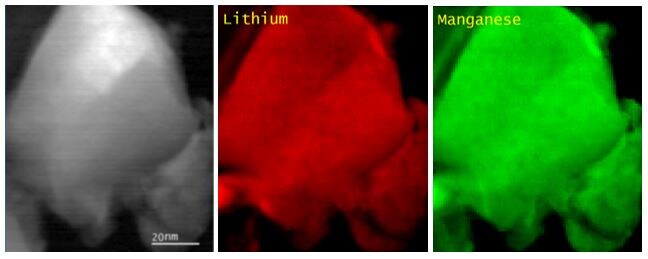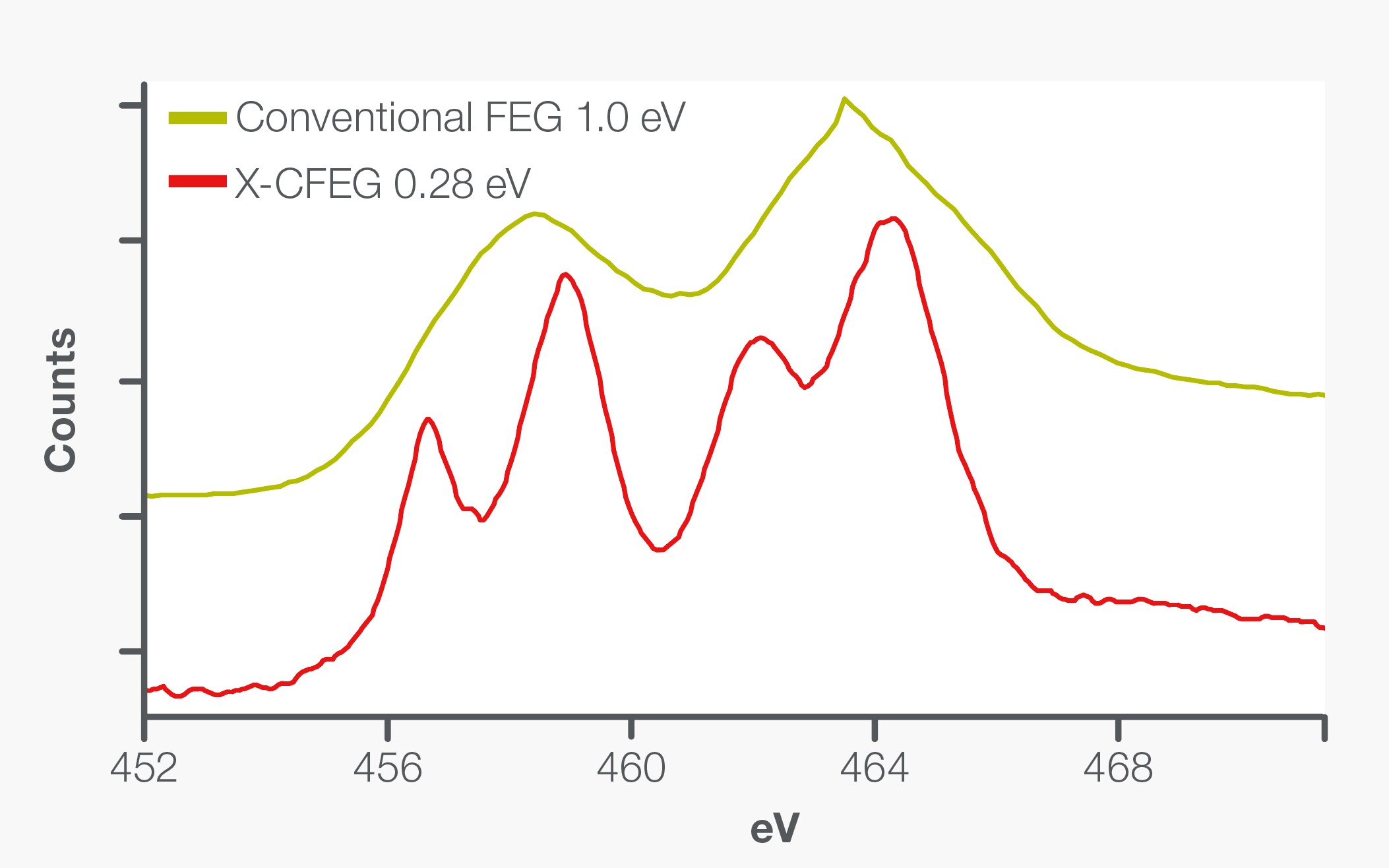Accelerate Materials Insights with Our New Cold Field Emission Electron Gun for Atomic-Scale High-Resolution TEM
01.20.2022Atomic-scale high-resolution TEM
As scientists in industry and academia increasingly require sub-nanometer information to better understand new materials’ properties, transmission electron microscopy (TEM) has developed to deliver spatial and chemical information at the nanoscale in a wide variety of fields such as catalysis, metals, batteries, and polymers as well as novel materials to accelerate development of next-gen technology. Researchers want high-resolution TEM to produce the highest quality images and most detailed information with the least amount of effort.
Cold field-emission electron gun
Adding our new ultra-high brightness Cold Field Emission Gun (X-CFEG) to the Thermo Scientific Talos TEM enables fast high-resolution scanning transmission electron microscopy (STEM) imaging, Energy Dispersive X-Ray (EDXS), and Electron Energy Loss (EELS) analytics. Developed for use with our Talos F200i and Talos F200X G2 TEM/STEM platforms, the X-CFEG produces the high-resolution STEM images and analytical information needed to accurately analyze materials at sub-nanometer and atomic resolution.
Faster high-resolution TEM results with less effort
With its unprecedented ultra-high brightness, small source size, and low energy spread, the X-CFEG improves the signal-to-noise ratio, providing the higher quality STEM images and EDS and EELS data needed to resolve previously imperceptible structures.
Used together with the advanced optics and automation of the Talos TEM, it produces faster results with less effort than conventional field emission guns. Thanks to the X-CFEG’s sharp tip, Talos users can capture STEM images at least 30 percent faster than with conventional field emission guns while achieving improved STEM resolutions as high as 0.136 nanometer with high probe currents.
A wide range of materials research applications
These faster, higher-quality results enable researchers with various levels of experience to advance many areas of materials science including battery development, catalysis and biomedical applications.
As researchers work to develop safer, environmentally friendly batteries with better safety, for example, they need to analyze the chemistry and performance correlation of rechargeable battery materials at better signal-to-noise ratios with high energy resolution to resolve the chemical details with EELS.

Using an X-CFEG together with a Talos TEM, researchers can analyze the fine structures and chemistry of rechargeable battery materials at high energy resolutions as they study the design of environmentally friendly batteries. Sample courtesy: Dr. Chongmin Wang, at Pacific Northwest National Laboratory (PNNL).
Using the X-CFEG together with the Talos TEM, scientists can explore the presence of battery materials such as manganese, lithium, and titanium at high energy resolutions. Examining the fine structures of these materials with such detail enables researchers to make batteries more environmentally friendly and improve their performance and safety.

The X-CFEG is superior to other guns with respect to brightness, source size, and energy spread. Here the titanium edges of the environmentally friendly Li Battery are shown from the same area. The difference is shown between 0.28 eV (X-CFEG, red) and 1.0 eV (conventional FEG, green) energy resolution. More peaks and more details are visible in the X-CFEG spectrum (red) which provides insights in the chemical structure that are not visible with the conventional FEGs.
Surface plasmon resonances are found within a wide range of biomedical applications, like cellular imaging, molecular diagnosis, and targeted therapy. Moreover, also in photonic applications, in semiconductor and for polymeric applications these surface resonances are used. Noble metal nanoparticles and nanorods are the most visualized systems. The electron beam of the X-CFEG can excite the surface plasmon resonances so it is possible to measure and image them with high resolution using EELS. With the high energy resolution and high brightness that X-CFEG provides, the Talos can accurately measure the diameter of gold nanorods and show how their resonance mode shifts with diameter, bringing researchers closer to understanding how these nanorods behave.

In the video, different energy filtered TEM images were compiled from the spectrum images dataset collected from our Talos TEM, equipped with X-CFEG with 0.3 eV energy resolution. The colors in the video indicate the strength of surface plasmon excitation. For example, the yellow/red color indicates a higher amount of energy loss that was absorbed by the localized surface plasmon resonance at the surface. In this example we observe localized surface plasmon resonances, eigen modes and coupling with each other within different Au nanorods. This is not visible with a conventional FEG. Sample courtesy Prof. Sara Bals From University of Antwerp
Additionally, as the world moves toward low-carbon energy sources, scientists are exploring the usefulness of the chemical compound cobalt oxide as a catalyst for producing carbon oxide-free hydrogen gas as a future energy source. The combination of our X-CFEG with the Talos TEM makes it possible to understand these catalytic reactions with greater precision to improve the overall activity and make the world cleaner.
Accelerating materials development
These are just a few of the ways the X-CFEG and Talos TEM can advance materials research and make the world cleaner, healthier and safer. Using these tools together, scientists can quickly and effortlessly obtain sharp, sub-nanometer resolution STEM images with high beam currents, leading to higher-quality EDXS and EELS analyses. With greater insight into the structure and chemistry of their samples, researchers are poised to speed up innovation as they tackle some of today’s toughest materials science challenges.
For more details and application examples using our Thermo Scientific X-CFEG, read our e-book, Unprecedented X-CFEG for the Talos TEM. Also, visit our Talos F200i and Talos F200X G2 webpages.
//
Yuri Rikers is a Product Marketing Manager at Thermo Fisher Scientific.
https://www.thermofisher.com/blog/materials/cold-field-emission-electron-gun-for-atomic-scale-high-resolution-tem/
No comments:
Post a Comment